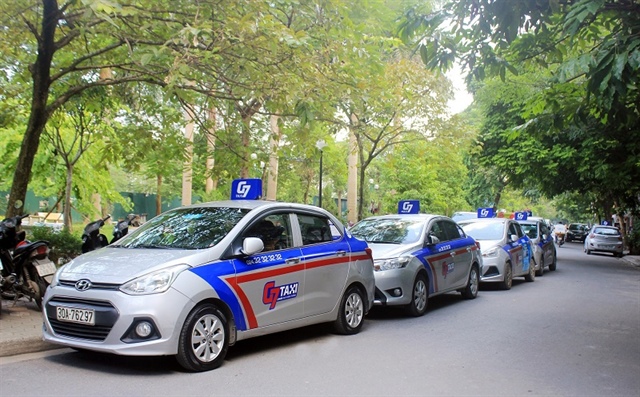Vietnam's ride-hailing market to reach US$2.16 billion by 2029: Mordor Intelligence
Vietnam's ride-hailing market to reach US$2.16 billion by 2029: Mordor Intelligence
Companies in the ride-hailing industry are focusing on launching new services and making new investments.
Vietnam's ride-hailing market is expected to achieve a 19.5% compound annual growth rate (CAGR) from 2024 to 2029, reaching a value of US$2.16 billion by 2029, according to Mordor Intelligence's “Vietnam Ride Hailing 2024” report.
This forecast indicates significant room for growth and potential, with the market size potentially doubling in around 4-5 years.

G7 taxis stop at a local park in Hanoi. Photo: Tuan Anh/ The Hanoi Times |
The report forecasts that the country's ride-hailing market will be worth US$880 million this year.
According to the study, Vietnam's growing urban population and rising disposable incomes have led to a growing demand for convenient transportation options, especially among urban commuters and young professionals.
These factors, combined with high smartphone penetration, internet connectivity and a young population, have driven the overall ride-hailing market and tech-enabled ride-hailing services in Vietnam in particular.
Aware of this potential, companies in the sector are focusing on launching new services and making new investments, such as in delivery and digital financial services, as well as venturing into new markets and segments within the consumer and transport sectors.
Ho Chi Minh City currently represents the largest ride-hailing market in Vietnam. Platforms such as Grab, Be, Gojek, and Vingroup-backed Xanh SM dominate the digital side of the ride-hailing market.
The research also highlights the positive impact that the entry of Xanh SM in 2023 will have on Vietnam's ride-hailing industry. The service quickly rose to the second largest market share in Vietnam in the fourth quarter of 2023, just over seven months after its official entry.
Currently, Xanh SM has twice the market share of its previous competitor in second place, Be Group (18.17% compared to 9.21%). Xanh SM is currently the leader in the traditional taxi sector in terms of number of vehicles and daily trips.
Grab remains the number one player in the Vietnamese market with a market share of nearly 60%.
The research firm noted that industry players in Vietnam are focusing on launching new services and investing to expand their ride-hailing, delivery and digital financial services, as well as new ventures into new markets and segments of the consumer and transportation sectors.
This March, following successful launches in Vientiane and the tourist town of Vang Vieng, Xanh SM Laos officially expanded its electric taxi service to Savannakhet Province. This marks Xanh SM’s next step in brand development and the company’s continued commitment toward promoting electric vehicles and environmental protection worldwide.
In January, Mai Linh Corporation expanded its services in Hanoi, Danang, and Dong Nai to further strengthen its legacy in the ride-hailing market.
Last October, Indonesian technology company Gojek announced its expansion into the provinces of Binh Duong (Di An, Thuan An and Thu Dau Mot) and Dong Nai (Bien Hoa), which are neighboring cities to Ho Chi Minh City.
According to Statista, revenue from the ride-hailing and taxi segment of the shared mobility market in Vietnam is expected to reach $4.63 billion by 2027.


























